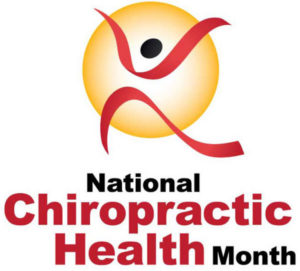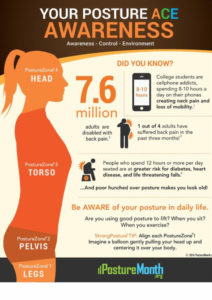Research shows that movement is vitally important, especially as we get older. Physical activity not only helps reduce the risk of cardiovascular disease, Type 2 diabetes and even some cancers, it also strengthens our bones and muscles. As we age, the health of our bones and muscles — known as our musculoskeletal system — is key to reducing the frequency and severity of common conditions such as back pain as well as preventing falls and other injuries that can lead to disability. For these reasons, it’s essential to move now, to move later…to move for life…to stay healthy and strong, active and engaged.
There are well over 100 types of adjustment techniques used by chiropractors throughout the world. Typically, chiropractors will focus on and utilize 8 to 10 different approaches in their practice.
The common goal of most chiropractic techniques is to restore or to enhance joint function, with the general goals of resolving joint inflammation and reducing pain. Some approaches use some force (spinal manipulation), while others are more gentle (spinal mobilization).
There are well over 100 types of adjustment techniques used by chiropractors throughout the world. Typically, chiropractors will focus on and utilize 8 to 10 different approaches in their practice.
The common goal of most chiropractic techniques is to restore or to enhance joint function, with the general goals of resolving joint inflammation and reducing pain. Some approaches use some force (spinal manipulation), while others are more gentle (spinal mobilization).
The original chiropractic adjustment approach is generally referred to as spinal manipulation, and may also be called the diversified technique or the high-velocity, low-amplitude (HVLA) thrust. New chiropractic adjustment approaches typically evolve as a variation from an existing technique and are often named after the chiropractor who developed it.
This article reviews a number of the most commonly used spinal manipulation and spinal mobilization techniques currently used by chiropractors.
Spinal Manipulation (High-Velocity Low-Amplitude Thrust)
The most frequently used chiropractic technique, spinal manipulation, is the traditional high-velocity low-amplitude (HVLA) thrust. The manipulation often results in an audible “pop,” as chiropractors use their hands to apply a controlled sudden force to a joint while the body is positioned in a specific way.
Spinal Mobilization (Low-Force or Gentle Chiropractic Techniques)
Some conditions (such as osteoporosis), pathology, the patient’s size, patient comfort, or patient preference, may require a gentler approach generally referred to as spinal mobilization. In addition, some patients and/or clinicians prefer mild spinal mobilization techniques that do not involve twisting of the body or a forceful thrust.
n addition to manipulation, many chiropractors will employ adjunctive therapy, such as ice or heat or physical therapy modalities (such as electric stimulation, ultrasound, etc.), as part of an overall treatment plan. Patients should discuss their symptoms and preferences with their chiropractor, whose role it is to perform a thorough examination to determine the best course of treatment.
Chiropractors are not the only health care providers who utilize spinal manipulation for back pain treatment. Many osteopathic physicians will provide a variety of types of spinal adjustments, such as the spinal manipulation and mobilization described in this article. Occasionally, other types of health care professionals, such as physical therapists or physiatrists, will be trained in providing spinal manipulation as well.
The goal of spinal mobilization is the same as HVLA spinal manipulation – to restore or to enhance joint function. However, unlike HVLA spinal manipulation, slow movement, usually to a firm endpoint of joint movement, is used to mobilize the joint.
Chiropractors may choose spinal mobilization for certain patients for a variety of reasons, such as:
- Patient preference – certain patients prefer spinal mobilization over spinal manipulation
- Patients with sensitive nervous systems may benefit from gentle chiropractic techniques to keep the body from overreacting and causing reactive muscle spasms
- Patients with some conditions may be contraindicated for spinal manipulation, such as possibly patients with advanced osteoporosis, bone pathology, some forms of deformity, and certain types of inflammatory arthritis
- Chiropractors may choose spinal mobilization for patients when they are in the acute stage of their condition and in severe pain
- Obesity can make the positioning of the patient and the manipulation procedures challenging for both the provider as well as the patient, which might favor a low force technique.
Spinal Mobilization Methods
There is a wide range of spinal mobilization approaches and techniques. Several of the more common gentle spinal mobilization methods include:
- Activator method: The Activator is a hand-held, spring-loaded, manual tool that provides a low-force impulse. With the patient lying face down on the adjustment table, the chiropractor evaluates leg length, performs muscle testing, and adjusts the spine or extremity joints using the Activator tool.
- Cox Flexion-distraction: This technique involves a gentle adjustment that is designed to adjust vertebrae by applying a gentle stretch to the lower spine, usually in a series of repetitive slow movements similar to a rocking motion.
- Toggle Drop: Using crossed hands one on top of the other, the chiropractor presses down quickly and firmly on a particular area of the spine while a section of the drop table falls, taking advantage of gravity to apply the adjustment. The table has different sections that can be raised and dropped in accordance with the localization of the spinal adjustment.
- McKenzie Technique: This approach uses a patient preferred position to facilitate pain reduction.
- Release work: Applying gentle pressure using the fingertips, the chiropractor separates the misaligned vertebrae with the goal of restoring them back to their natural positions.
- Sacro-Occipital Technique (SOT): This method involves placing wedges or blocks under the pelvis, allowing gravity – with some addition low force assistance by the provider – to realign the pelvis.


